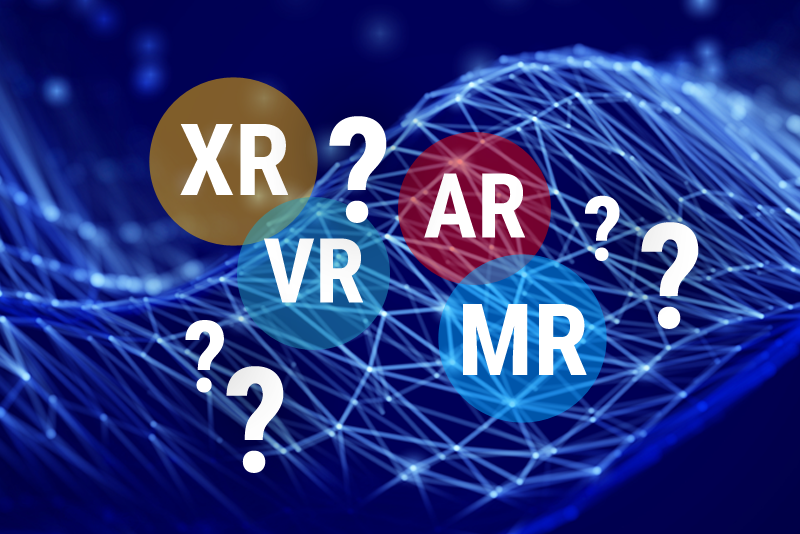What’s the Difference Between VR/AR/MR/XR?
All Resources

Alphabet soup is what we get with our immersive technologies! If you are not sure what all these acronyms stand for, or know what they mean, you are definitely not alone. I will attempt to provide a visual picture for you so that you can remember immersive technology terminology moving forward.

VR and AR have been around the longest of the four terms. So I’ll cover them first.
VR stands for Virtual Reality and generally refers to the true immersive technology that transports the user, or in our case the learner, into an imaginary world that mimics the real world. Sometimes the virtual environment is referred to as computer-simulated reality or computer-generated simulation. The user/learner uses a headset to see the visuals and also hear what’s happening in the virtual world. It is possible to engage all five senses using VR (i.e., sight, smell, sound, taste, and touch) but for now sight, sound and touch are the primary senses leveraged with this technology. Highly utilized by gaming technology during its early introduction, virtual reality now serves many practical applications in the private and public sector and continues to evolve and change.
AR stands for Augmented Reality and might be the most common of the four terms because of its popularity on our smartphones. The smartphone can achieve the overlay of the real world with use of virtual content. Here the user/learner can see the real world overlaid by the virtual content. But unlike VR, an AR user is unable to interact with the environment. Common examples of AR being used on our smartphones is Pokemon Go or retail apps selling anything that can be overlaid onto a picture of your own living room, tempting you to buy it now.
MR stands for Mixed Reality and, as you might guess, is a mixture of both an environment that puts the user/learner into both the virtual world (VR) and the real world (AR). You may also hear the term hybrid reality applied here. In MR we try to find ways to allow the user/learner to use the real world to interact with the imaginary world using real and digital objects at the same time and interacting in real time. Medical schools make use of MR by allowing medical students to work with a virtual patient and providing medical references by overlaying the information in the virtual environment needed to perform a specific anatomical procedure. (Video of MR: https://er.educause.edu/articles/2018/7/mixed-reality-a-revolutionary-breakthrough-in-teaching-and-learning )
XR stands for Extended Reality and is the newest of these four terms. It is mostly used to provide an umbrella for which to house these immersive technologies under. XR includes VR, AR, and MR but also refers to a variety of additional tools that are used to generate these environments. For example, leveraging artificial intelligence (AI) and learning algorithms to influence your path through an immersive experience.
Immersive technologies are here to stay. Look to the term XR to define what is capable with these technologies as we grow and change with the evolving software and hardware presented into the marketplace.
Are you ready to create an engaging learning program? Contact us at team@epsilonxr.com.
—
 Barbara Greenstein, Senior Instructional Designer at Epsilon Systems Solutions, Inc. is a Performance Improvement Specialist providing proven and creative ways to improve human performance in the workplace. Highly regarded for her instructional design and facilitation skills, with over 30 years in the learning and development field, she helps clients put the systems in place to more effectively manage in today’s changing business environment while ensuring optimal performance and job satisfaction for all employees. She received her M.A. in Human Resource Development from Marymount University. Barbara is a Certified Performance Technologist (CPT), from ISPI.
Barbara Greenstein, Senior Instructional Designer at Epsilon Systems Solutions, Inc. is a Performance Improvement Specialist providing proven and creative ways to improve human performance in the workplace. Highly regarded for her instructional design and facilitation skills, with over 30 years in the learning and development field, she helps clients put the systems in place to more effectively manage in today’s changing business environment while ensuring optimal performance and job satisfaction for all employees. She received her M.A. in Human Resource Development from Marymount University. Barbara is a Certified Performance Technologist (CPT), from ISPI.
